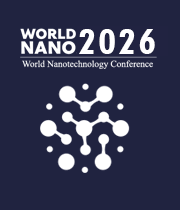Inorganic Nanobiotechnology
Inorganic Nanobiotechnology are materials that have been engineered to have dimensions on the nanoscale, which is between 1 and 100 nanometers. These materials can have unique properties, such as high electrical conductivity, optical transparency, and enhanced physical strength. They can also have enhanced chemical and thermal stability, giving them the potential to be used for a range of applications, such as in the biomedical, electronics, and energy industries. Inorganic Nanobiotechnology are made from a range of elements and compounds, such as metals, alloys, and oxides. The most common techniques used to create these materials are chemical synthesis, physical vapor deposition, and electrochemical deposition. Each method produces Nanobiotechnology with different characteristics and properties, so the choice of method depends on the desired application. The most common inorganic Nanobiotechnology are metal and metal oxide nanoparticles, which are used in a wide range of applications. For example, they can be used to create transparent conductive coatings, catalysts, and drug delivery systems. They can also be used to enhance the strength and durability of materials, as well as to improve the efficiency of solar cells. Inorganic Nanobiotechnology can also be used to create nanostructures, such as nanotubes and nanowires. These structures are highly conductive and can be used to create transistors, sensors, and other electronic components. They can also be used for a range of biomedical applications, such as for drug delivery, imaging, and diagnostics.

Harry E Ruda
University of Toronto, Canada
Raman Singh
Monash University, Australia
Paulo Cesar De Morais
Catholic University of Brasilia, Brazil
Xiao Hong Nancy Xu
Old Dominion University, United States
S V A R Sastry
Harcourt Butler Technical University, India
Vinayak Adimule
Angadi Institute of Technology and Management, India



Title : Circumventing challenges in developing CVD graphene on steels for extraordinary and durable corrosion resistance
Raman Singh, Monash University, Australia
Title : Nanomaterial-based bio-lubricant additives for improved efficiency and environmental sustainability in automotive applications
S V A R Sastry, Harcourt Butler Technical University, India
Title : Evaluating cytotoxicity of metal-doped tin oxide nanoparticles
Paulo Cesar De Morais, Catholic University of Brasilia, Brazil
Title : 40,000 implants in humans and no failure: The impact of nanomedicine
Thomas J Webster, Hebei University of Technology, China
Title : Enhanced photoluminescence and fluorescence properties of flake-like Co3O4@Cs2O bimetallic oxide nanostructures
Vinayak Adimule, Angadi Institute of Technology and Management, India
Title : Lipid nanoparticles formulations: From bench scale to industrial scale
Mohammad A Obeid, RAK Medical and Health Sciences University, United Arab Emirates